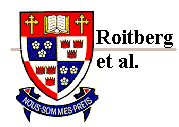
Alice Sinai
MPM candidate
Email: asinia@sfu.ca
Effect of plant feeding on forage behaviour and predation in Dicyphus hesperus Knight (Heteroptera: Miridae)
Background
Most species of Heteroptera are zoophytophagous, feeding both on plants and insects. However, the relationship between plant feeding and prey feeding in
most Heteroptera is not clear. Ecologists assume that zoophytophagous insects switch between plant feeding and prey feeding depending on the availability,
amount and nutritional value of the resource. There has been another suggestion that plant feeding could be obligate. Implying that the insects are obtaining
an essential nutrient from the plant on which some of their body function/physiology depends.
Because of their mode of feeding and since they can stabilize pest populations to a greater extent than pure predators,
Heteroptera species are potential biological control agents that could be used to manage Agricultural pests. However, the use of these insects as biological control
agents poses some problems because they might cause potential damage to plants and possibly mechanically transmit plant pathogens.
Dicyphus hesperus a BC native zoophytophagous mirid is being evaluated for biological control of Greenhouse white flies (Trialeurodes vaporariorum) and
two-spotted spider mites (Tetranychus urticae) on green house vegetables in BC at the Pacific Agri-food Research Centre Agassiz. Therefore, it is important to determine
the relationship between plant feeding and prey feeding of Dyciphus in order to be able to predict, describe and prevent any potential damage and pathogen transmission
to plants.
Three conceptual models have been put forward by Dr. Dave Gillespie and colleagues to explain any possible plant/prey feeding relationship in D. hesperus:
1) The "Switching Model"
Suggests that plant feeding is inversely proportional to prey feeding, possibly because:
Plant feeding is substitute during low prey densities
Plant might not provide essential nutrient
Prey might be more nutritious than plant and so energy and time is
spent more on the former.
2) The " Linear Model"
Suggests that plant feeding is directly proportional to prey feeding, possibly because:
Plant feeding provides essential nutrient source which can not be obtained from prey and is needed for predation to occur, such production of saliva for extra-oral digestion
Plant feeding is facultative
3) The "No relation model"
Suggests that plant feeding is independent of prey feeding.
In my project, I intend to determine which of the above models best represents the plant/prey feeding relationship in D. Hesperus under different conditions.
OBJECTIVE OF PROJECT
To determine how plant feeding relates to prey feeding under different prey conditions and how it affects forage behaviour and predation.
Any suggestions? Comments, email me at asinia@sfu.ca



Photo 1,2 and 3 Adult D. hesperus and nymph
 Photo 4 Rearing of D. Hesperus on tobacco substrate, fed on Ephestia kuehniella eggs (Lepidoptera: pyralidae)
Photo 4 Rearing of D. Hesperus on tobacco substrate, fed on Ephestia kuehniella eggs (Lepidoptera: pyralidae)

Photo 5 Treatment cups

Photo 6 Experiment set up

Photo 7 D. Hesperus plant feeding


Photo 8a,b.. D. Hesperus egg feeding



Photo 9a,b. D. Hesperus grooming
Back to lab homepage
Created on November 6, 2000
Last updated on November 6, 2000



 Photo 4 Rearing of D. Hesperus on tobacco substrate, fed on Ephestia kuehniella eggs (Lepidoptera: pyralidae)
Photo 4 Rearing of D. Hesperus on tobacco substrate, fed on Ephestia kuehniella eggs (Lepidoptera: pyralidae)







